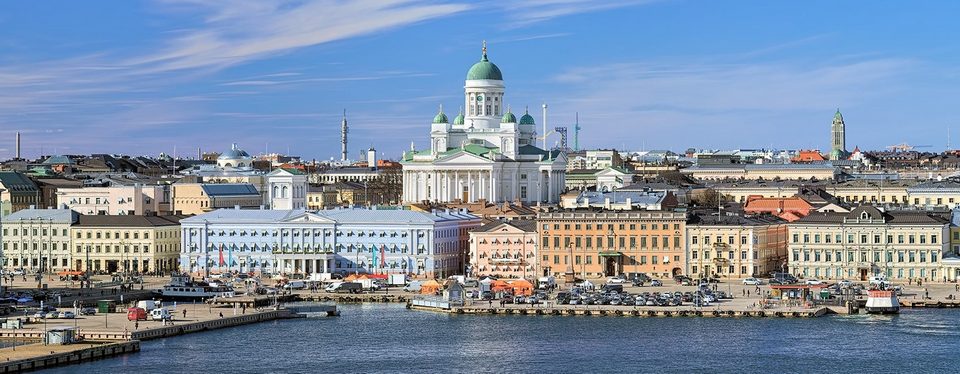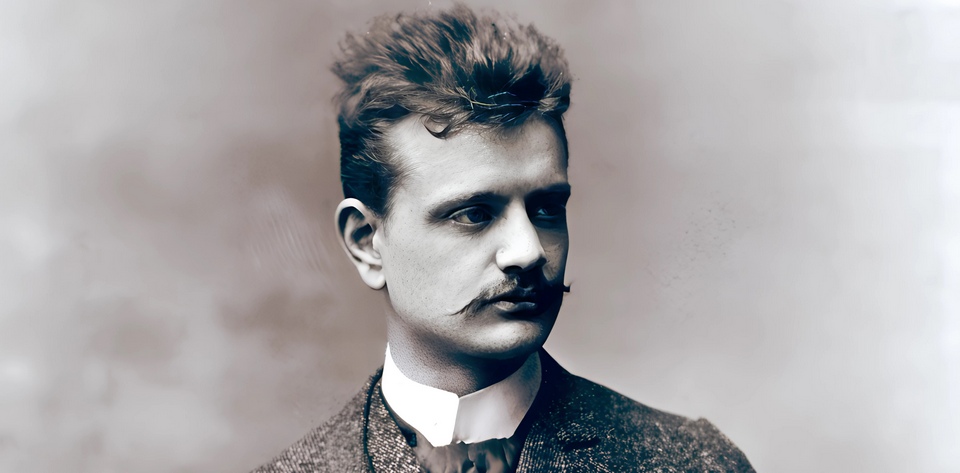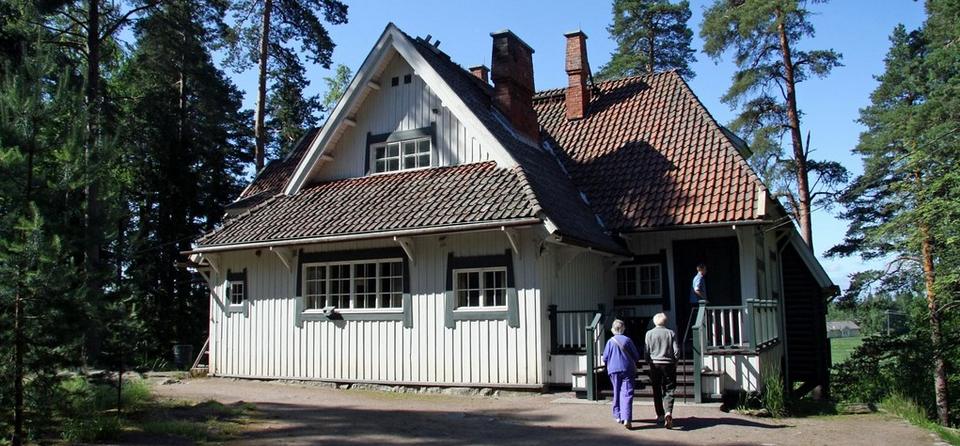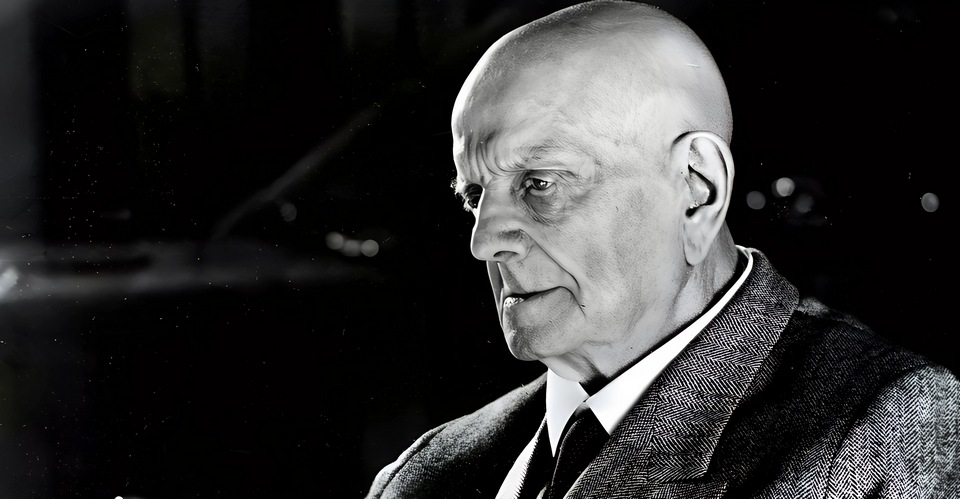
Now then, I wonder how many Finnish classical composers you could name if I offered you a modest reward? Not a lot, I suspect. This is partly because there are not very many of them. Not very many at all. The reason that composers were so rare in eighteenth century Finland was partly because the action was elsewhere. At the time, musicians generally relied on patronage to make a living and most of the decent job opportunities tended to be in the thriving royal courts further south.
My one-and-only visit to Finland was a good many years ago, when I attended a conference in Helsinki. I travelled on Finnair hoping to absorb a bit of local colour. I also bought a Finnish phrase book, unaware that most educated Finns speak perfectly good English. The Finnish language is something of a challenge for foreigners. The Defense Language Institute in California classifies it as a Level Three Language (of four levels) in terms of learning difficulty for native English speakers. This is on the same level as Albanian, Thai, Serbo-Croatian and Hungarian. Interestingly, Finnish and Hungarian are related (though not mutually intelligible) because they come from the Uralic group of languages, thus setting them apart from most other European tongues. Despite the difficulty of the language for foreigners, the locals manage it quite well, for in Finland the literacy rate is 100%.
I can’t recall much about the conference but I was taken aback by the astronomical prices for everyday things. Restaurant prices were sky-high and I existed mainly on a diet of sandwiches. It was surprising to see the number of drunks in the streets, usually staggering about aimlessly. The hotel receptionist was a lady in her late thirties with swept-back blond hair and who looked as though she might have been an amateur accordionist. I tactfully asked why Helsinki had so many inebriated residents. “It’s due to the high price of alcohol,” she explained solemnly, “This makes many people depressed and so they get drunk.” “Oh, I see,” I replied, not really seeing at all.
The first significant Finnish composer was the 19th century Fredrik Pacius and although he was German, has become known as “the father of Finnish music”. He composed the Finnish national anthem and the first Finnish opera, along with a handful of orchestral works. Then there was Bernhard Crusell, best known for his clarinet music and Armas Järnefelt whose charming orchestral pieces Berceuse and Praeludium have become well-known. The composer Selim Palmgren became known as “The Finnish Chopin” on account of his vast number of piano compositions, some of which are still popular today. And as far as Finnish composers are concerned, that’s almost it.
The twentieth century saw a flowering of musical talent and a few composers made a significant impact outside the country notably Sven Einar Englund, Kaija Anneli Saariaho and the dauntingly named Einojuhani Rautavaara. This was partly due to the development of Finnish music education and also due to the influence of one musician who put Finland firmly on the musical map. I am referring of course to Jean Sibelius, born into a Swedish-speaking family in the southern Finnish city of Hämeenlinna.

I first encountered his name as a teenager and was puzzled that his first name looked French and his surname sounded like that of a Roman poet. As a boy, he was evidently known as Janne, a colloquial form of Johan but during his student years, he adopted the French form, Jean. Perhaps it sounded more sophisticated. By that time, he was an accomplished pianist and violinist and by the age of twenty-one, he was a violinist of a professional standard. In 1887, aged twenty-two, he performed the Mendelssohn Violin Concerto in Helsinki. And in case you are wondering, his surname is pronounced si-BAY-lee-us, and not as sigh-BEE-lee-us as one of my linguistically-challenged friends used to say.
Jean Sibelius (1865-1957): Karelia Suite, Op.11. Munich Philharmonic Orchestra cond. Paavo Järvi (Duration: 16:50; Video: 720p HD)
Completed in 1893, this is one of the composer’s best-known works. The main theme of the first movement was used in a British television series called This Week which ran from 1956 to 1979. Incidentally, another much-loved British television programme also used a work by Sibelius: The Sky at Night, presented by the astronomer Sir Patrick Moore. It was the longest-running programme in television history with the same presenter. The opening and closing theme music was entitled At the Castle Gate, from the incidental music to Pelléas et Mélisande, written by Sibelius in 1905.

The Karelia Suite has three movements, but originates from a much longer work consisting of an overture followed by eight other movements. The opening Intermezzo begins with the magical sound of quiet tremolo strings and a sustained timpani roll over which fragments of an emerging melody appear on the horns. The music builds in energy and a brilliant march-like tune is stated on the trumpets accompanied by energetic chugging rhythmic phrases on the strings. The full brass section then takes up the melody, with spikey off-beat chords from the woodwind section driving the music to its climax. But it doesn’t end there, for Sibelius then takes us back to the quiet, pastoral mood of the beginning, with echoes of the melody played quietly above the softly shimmering string tone.
The second movement is entitled Ballade and, in a way, acts as a signpost towards the composer’s unmistakable later musical style. In complete contrast to the opening movement, this one begins with clarinets and bassoons leading to a sombre waltz-like section on the strings. The music builds in loudness but even when it changes to a major key, there is a curious underlying sense of unease. There’s a compelling hymn-like section played by the strings which leads to a majestic re-statement of the hymn by the full orchestra. Towards the end of the movement, there are two bars of silence: a fascinating example of how a composer can use silence in music for dramatic effect. The final movement, Alla Marcia as the name suggests, is another lively march and its chirpy skipping melody brings a welcome contrast to the foreboding previous movement. It features another memorable “big tune” with jubilant brass writing and sparkling orchestration throughout.
This bright and optimistic music is quite different to the composers later composing style. He was an immensely prolific composer and his later works are often darker in outlook, more concentrated and highly organised in construction, sometimes using long, evolving melodies and thematic transformation. His Valse Triste gives a slight taste of things to come.
Jean Sibelius: Valse Triste op. 44. Frankfurt Radio Symphony cond. Jukka-Pekka Saraste. Duration: 4:47; Video 1080p (HD)
The dance known as the waltz can be traced back to the 13th century and the word itself comes from the German walzen which means to revolve or turn. During the late eighteenth century, the waltz was becoming popular in Austria, though the upper social classes preferred the statelier and more reserved minuet. The waltz gained popularity as a ballroom dance in the 19th century and evolved into various styles including the Viennese waltz, immortalized by the Strauss family.

This music dates from 1903 and was originally part of some incidental music Sibelius wrote for Arvid Järnefelt’s play Kuolema (“Death”). The following year, the composer refashioned the opening music of the play into a stand-alone concert piece adding parts for flute, clarinet, horn and timpani. He renamed the piece Valse Triste. The title is usually translated as “sad waltz” but the French word “triste” can convey a more subtle meaning and sometimes suggests gloom and melancholy. In this work, Sibelius transformed the ballroom waltz into something far more sophisticated, and when it was performed in Helsinki that year, it was an instant success. It has since become one of the composer’s signature works. The original programme notes read:
It is night. The son, who has been watching beside the bedside of his sick mother, has fallen asleep from sheer weariness. Gradually, a ruddy light is diffused through the room: there is a sound of distant music: the glow and the music steal nearer until the strains of a valse melody float distantly to our ears. The sleeping mother awakens, rises from her bed and, in her long white garment, which takes the semblance of a ball dress, begins to move silently and slowly to and fro. She waves her hands and beckons in time to the music, as though she were summoning a crowd of invisible guests. And now they appear, these strange visionary couples, turning and gliding to an unearthly valse rhythm…
It is strange, haunting music, beginning with soft pizzicato strings then a curious chromatic melody played by violin and cellos in octaves and creating a sonorous tone. The woodwind instruments enter with a more light-hearted cheerful melody as the music becomes more animated. The music drifts through different contrasting moods and gradually dies away to almost nothing, ending with four solo violins playing a quiet chord of G minor.

By the year 1926, when Sibelius had just turned sixty, he had completed all his major compositions. He’d written seven superb symphonies, the violin concerto and several tone poems which even today are still performed regularly around the world. He wrote many pieces inspired by nature, for even as a child living in Hämeenlinna, he had taken to wandering in the nearby countryside. He had completed over a hundred songs for voice and piano; incidental music for numerous plays, the one-act opera The Maiden in the Tower and a vast amount of chamber music and piano music.
But then, Sibelius suddenly stopped composing. For the remaining thirty years of his life, he wrote almost nothing. Perhaps he just felt that he had written enough. The great Finnish composer had finished. Even so, his music had established a strong sense of national musical tradition in Finland; a tradition that has vigorously flourished ever since.











